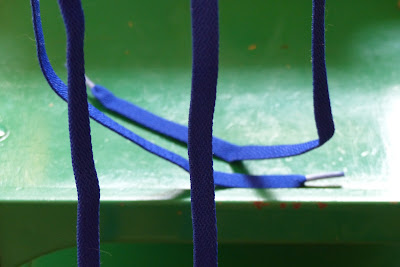The year is 2013, a time of social media, technological
wizardry, interactive video games, and easy access to many forms of
entertainment. We are bombarded
with news, music, movies, and advertising at a rate far faster than we can
realistically take in and process in any helpful or meaningful way. As a result, most of us are caught up
in a speedy life, filled with disjunct bits of information, busy schedules, and
very little time to “stop and smell the roses” so to speak.
With all the speed, there comes a kind of numbness. Rather than actually experiencing our
world directly, with our senses and an open mind, we tend to react in three ways: by
accepting, rejecting, or ignoring.
Sometimes we like something, and want more of it. “That game is so cool, my friends all
have it!” Or we really don’t like
something. “Man, that phone looks
old, and it’s really ugly.” Or, we
ignore what is there completely and look right past it. Most of the time, the things we ignore
are not even on our radar for more than a second or two, so we don’t remember them. If someone asked
you to close your eyes and say what color shirt the person next to you was
wearing, would you be able to answer?
Maybe yes, or maybe no!
So, what would happen if we slowed down and noticed our own
accepting, rejecting, and ignoring?
We might discover that we have missed a lot in our everyday world,
thinking it is boring, just not worth looking at. But there is so much to see! First, we have to be willing to pause and see it. We have to realize that beneath our judgments about the
world we live in, there is something new and perhaps quite wonderful to
experience. And it is right under
our nose, almost literally.

The main problem, the reason we don’t see what is right in
front of us, is because we have not been taught how to look. When we see something that catches our
eye, we often don’t take the time to really look at it because we are not
accustomed to actually stopping to appreciate these experiences, even though
they may happen all the time.
Through the practice of Contemplative Photography, it is possible to
“get in the habit” of noticing more of these ordinary moments that normally
pass us by. Through noticing, and
spending time with our visual perceptions, we can then photograph them and, if
we wish, share them with others.
So, how do we learn to look? We begin by setting the intention to look. What do we look for? In this practice, it is useful to look
for a basic element of form, such as color or texture. When we set our intention to look for
color, for example, we will begin to notice color in unexpected places and in
new ways.
We might notice the vivid orange of a dish in the sink, the
texture of the soap bubbles hovering on the surface of the water, the way the
light reflects softly from the window above. Or, we might see the pile of dishes and think, “oh no, look
at all these dirty dishes. This is
going to take forever to wash!” And then, turn around and look for something more
interesting to spend our time on.
We always have this choice. We can either look, see, and appreciate what is actually
going on in our lives, or we can take a U-Turn down a path of familiar thoughts
and judgments about the world we live in-- and miss our immediate experience
entirely!
You may be thinking, “I don’t have time to stop and look at
dishes in the sink!” There are
many important and practical tasks to be done. But, what’s interesting is that these mundane tasks will
actually be more enjoyable if we are present and aware as we do them.
And the truth is that if we devote
ourselves to the practice of looking and seeing, we will have all the time we
need.
To view photographs that express my own
direct experience, click here.








































